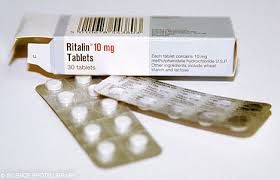15 Warning Signs of Stimulant Abuse
Stimulant abuse has become a major problem in the United States, with many people going down this path. The most common types of stimulants include: methamphetamines, cocaine, and crack. While these may be among the most commonly abused stimulant drugs, there are others that can cause just as much trouble for the user. Such stimulants include nicotine, Adderall and Ritalin and various other prescription medications.
All three of the stimulants noted above are extremely powerful and highly addictive. Once a person begins to take such a drug, there is always the chance that he or she could develop an addiction sooner rather than later.
Note: there are times when a person starts out taking a prescription stimulant, such as Adderall, as a means of bettering their life, such as to treat attention-deficit hyperactivity disorder (ADHD). Over time, however, they find that they are taking more of the drug than they should, as they enjoy the way it makes them feel.
Are you concerned that a friend or family member is abusing one or more stimulant? If so, you probably have many good reasons for feeling this way. However, it is not always easy to make a final determination.
Why is Abuse a Problem?

Stimulant abuse can lead to addiction.
Simply put, people abuse drugs because they like the way it makes them feel. The National Institute on Drug Abuse explains how stimulants work:
“All stimulants work by increasing dopamine levels in the brain—dopamine is a neurotransmitter associated with pleasure, movement, and attention. The therapeutic effect of stimulants is achieved by slow and steady increases of dopamine, which are similar to the way dopamine is naturally produced in the brain. The doses prescribed by physicians start low and increase gradually until a therapeutic effect is reached.”
Signs of Stimulant Abuse or Addiction
Now that you have a clear understanding of the common types of stimulants and why these drugs are abused, it is time to focus on signs of abuse or addiction. These are the signs to keep an eye out for if you believe a loved one is abusing this type of drug.
Here are some of the questions to ask:
- Is the person acting different than before?
- What has changed in his or her life?
- Are there any physical signs of abuse?
- Is the person having a difficult time communicating with others?
- Has he or she run into financial difficulties?
By asking these questions, you can get a basic understanding for what is going on. Furthermore, here are 15 warning signs of stimulant abuse:
- Euphoria. Are there times when the person appears to be extremely excited? These states of euphoria could point towards stimulant abuse.
- Fast breathing. Somebody who is abusing a stimulant may find it difficult to slow down his or her breathing. It may appear that he or she is always out of breath.
- Dry mouth. A common sign of stimulant abuse, many people will struggle mightily with keeping their mouth moist.
- Dilated pupils. This is a common sign of stimulant abuse, however, it is often times associated with other types of drugs as well.
- Increased alertness and energy. This goes along with the first warning sign on the list, euphoria. Does the person appear to have more energy than ever before? Are they extremely alert at all times?
- Decreased appetite. This warning sign is not attached solely to stimulant abuse, but is definitely something to be aware of. Many people taking this type of drug are not interested in eating, which leads to weight loss.
- Decreased fatigue. This can mean everything from a person who never slows down to somebody who doesn’t want to go to sleep at night.
- Increased sociability. It is not uncommon for a person abusing a stimulant to become extremely sociable and self-confident.
- Inability to stop taking the drug, despite the fact that it is having a negative impact on the person’s mind or body.
- Tolerance. This comes into play when a person is no longer achieving the desired effect through a particular dose, leading them to take more and more of the drug.
- Financial trouble. A common sign of all types of drug abuse, some people spend all the money they have in order to get their hands on stimulants that can help them feel “better.”
- Inability to maintain steady relationships. Once again, this is a sign of drug abuse in general, but is particularly true with those who are abusing stimulants.
- Aggression and hostility. Over time, somebody who continues to take stimulants could develop aggressive tendencies, accompanied by mood swings.
- Impaired judgment. It can be difficult to make the right decisions when “high” on a stimulant.
- Nausea and vomiting. This is more common as a person takes a higher dose of the drug.
Many studies have shown that stimulants affect the body, as well as the brain and behavior. For this reason, it is possible to pinpoint the warning signs of abuse.



